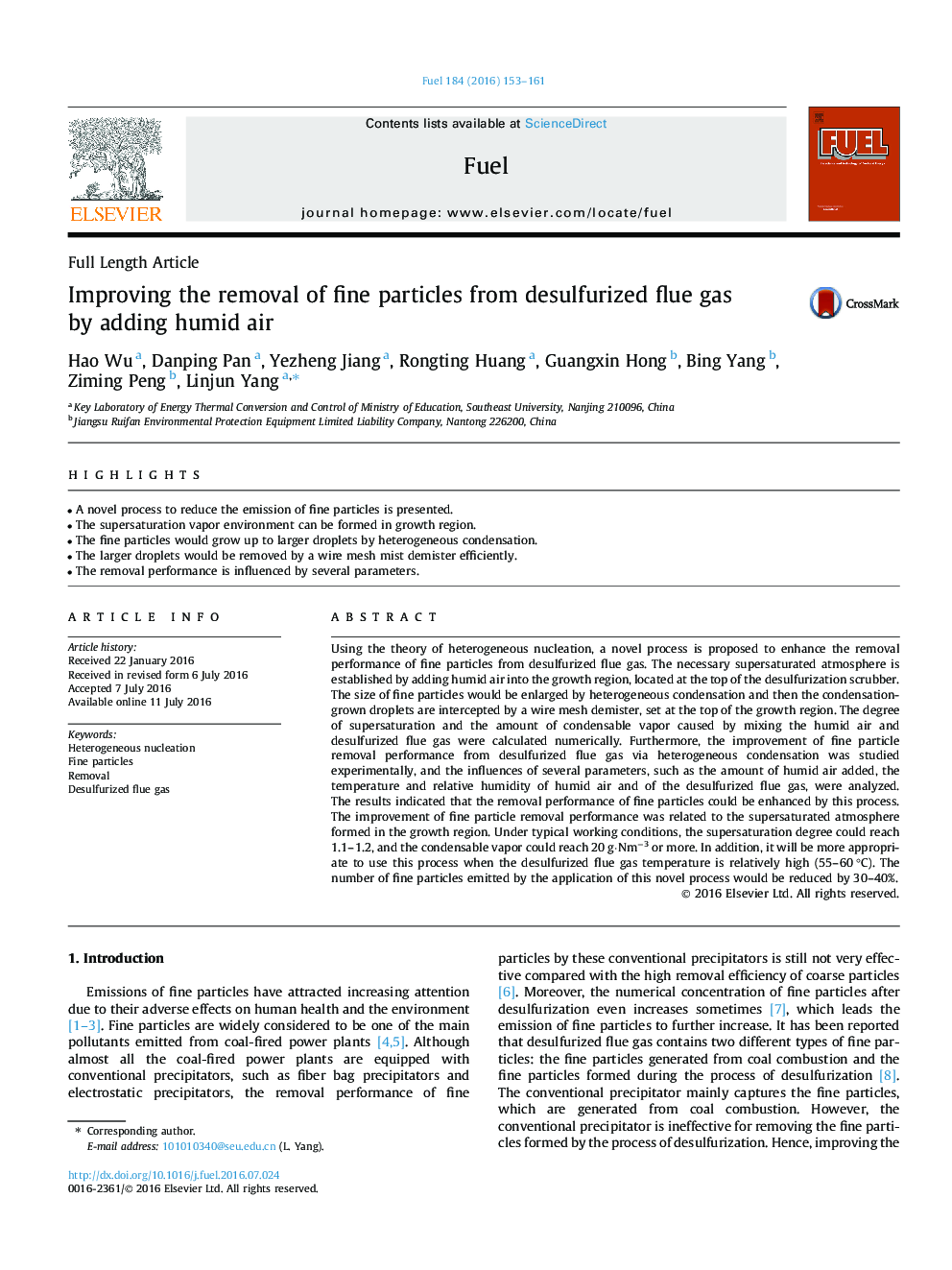| Article ID | Journal | Published Year | Pages | File Type |
|---|---|---|---|---|
| 6632965 | Fuel | 2016 | 9 Pages |
Abstract
Using the theory of heterogeneous nucleation, a novel process is proposed to enhance the removal performance of fine particles from desulfurized flue gas. The necessary supersaturated atmosphere is established by adding humid air into the growth region, located at the top of the desulfurization scrubber. The size of fine particles would be enlarged by heterogeneous condensation and then the condensation-grown droplets are intercepted by a wire mesh demister, set at the top of the growth region. The degree of supersaturation and the amount of condensable vapor caused by mixing the humid air and desulfurized flue gas were calculated numerically. Furthermore, the improvement of fine particle removal performance from desulfurized flue gas via heterogeneous condensation was studied experimentally, and the influences of several parameters, such as the amount of humid air added, the temperature and relative humidity of humid air and of the desulfurized flue gas, were analyzed. The results indicated that the removal performance of fine particles could be enhanced by this process. The improvement of fine particle removal performance was related to the supersaturated atmosphere formed in the growth region. Under typical working conditions, the supersaturation degree could reach 1.1-1.2, and the condensable vapor could reach 20 g·Nmâ3 or more. In addition, it will be more appropriate to use this process when the desulfurized flue gas temperature is relatively high (55-60 °C). The number of fine particles emitted by the application of this novel process would be reduced by 30-40%.
Related Topics
Physical Sciences and Engineering
Chemical Engineering
Chemical Engineering (General)
Authors
Hao Wu, Danping Pan, Yezheng Jiang, Rongting Huang, Guangxin Hong, Bing Yang, Ziming Peng, Linjun Yang,
